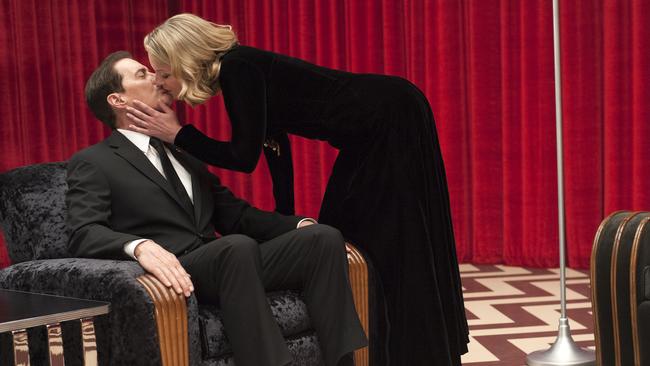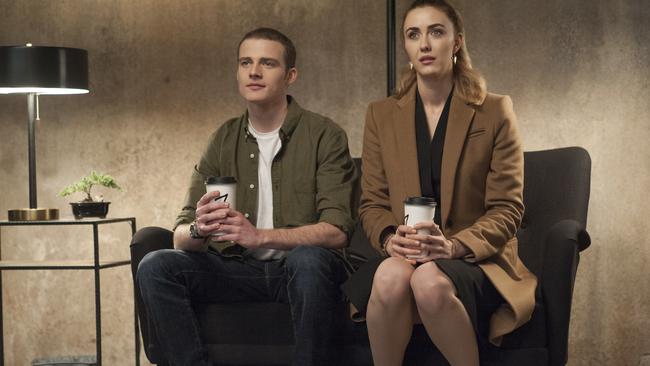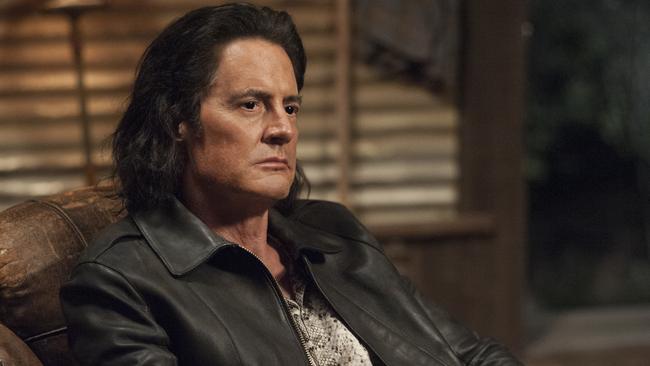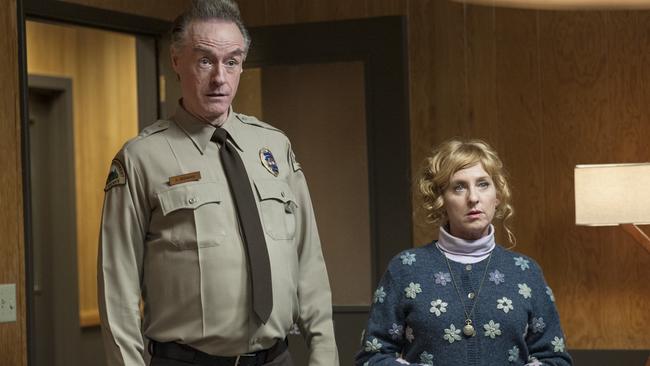Twin Peaks: The Return is next-level, full-tilt TV
EVEN if you thought the original 1990s Twin Peaks was strange, or that you’re familiar enough with Lynch’s work, you’re still not prepared for this.

I WAS originally going to pen something along the lines of “the five weirdest things in the Twin Peaks revival”.
But let’s be honest, out of the one-hour-and-54-minutes run time of the first two episodes of Twin Peaks: The Return, there was probably about eight minutes of non-weirdness. So it would’ve been a rather difficult task to narrow it down to just a handful of “what the actuals?”.
Make no mistake, when Showtime president David Nevins described the new Twin Peaks as “the pure heroin version of David Lynch,” he wasn’t joking. Not even a bit.
Even if you thought the original 1990s Twin Peaks was strange, or that you’re familiar enough with Lynch’s wider body of work, you’re still not prepared for this.
This is next-level, full-tilt, mind-f**k TV.
The kind of TV that could only be considered as TV because it’s been delivered to you in a technological format that vaguely resembles episodic television. It would probably be more at home as an installation piece in an oh-so-trendy gallery.
Because this is art — art that’s visceral; art that elicits a lasting physical sensation that lingers hours after viewing. It’s both provocative and evocative. What it isn’t is accessible.

Twenty-seven years since Lynch and Mark Frost co-created the influential original series, has once again reinvented what we could expect from the medium, upending what we’ve thought was acceptable on TV.
Lynch’s mastery of visual language is like nothing else you’ve seen on TV — from the familiar and distinctive chevron stripe and rouge curtains of the Red Room to the glass box of the studio in New York to how he foregrounds and backgrounds a single frame.
His willingness and confidence in playing with form and disregarding the “rules of TV” is exactly why the first Twin Peaks ushered in a new era of TV. What this new chapter will stir in the creative wells of the next generation of TV writers, well, we’ll see.
Of course, it’s hard to definitively critique how “successful” Twin Peaks: The Return is from just two hours out of 18. And Lynch has been adamant that this series is more like an 18-part film so it’s hard to really cast judgment on the first two parts in isolation, they’re just a smidgen of the whole. I’ve been reliably told the third episode is even more bonkers than the first two, as unbelievable as that sounds.

By the end of it, it could all fall apart, weighed down by its sheer ambition and unable to sustain the rush over 18 hours.
A word of warning though — don’t try to binge-watch Twin Peaks: The Return. Don’t leave it until the end of the series and consume all 18 episodes at once, or even fall a few weeks behind and catch up with a five-episode block one Sunday afternoon. Doing so does not bode well for your mental health.
Don’t even watch all four episodes available online right now. Break it up, save half for the weekend.
Twin Peaks: The Return should be watched with at least a few days in between instalments. Give yourself, your anxiety levels and your mind time to breathe, to process the abundant stimuli you’ve just seen.
To think. To feel.
SPOILERS FOR PARTS ONE AND TWO
The story picks up 25 years after Laura Palmer’s prophecy to Dale Cooper and now we know Cooper has been stuck in the Red Room this whole time. Laura’s spirit and Mike the One-Armed Man tell Cooper now is the time for him to leave the extra-dimensional (?) space, but his evil doppelganger has to return first.

The Bob-possessed Cooper, the Bad Cooper with the long hair, leather jacket and snake-print shirt, has been roaming the Earthly lands this past quarter-century, inflicting violence (and he is responsible for quite a few deaths in these first two hours) and general up-to-no-goodery. He knows he will be pulled back into the Black Lodge “tomorrow” but says, ominously, he has a plan.
Elsewhere, in Manhattan, a young man is keeping watch on a glass box built around a porthole window inside a locked studio.
In a town in South Dakota, a school principal is set up for the decapitation murder of his mistress. Bob is involved, but to what end? Maybe he was just getting his jollies off.
In Twin Peaks, the Log Lady calls Hawk and tells him that her log has a message for him about the missing Cooper. Hawk wanders into the woods and comes upon Glastonbury Grove, the entrance to the Lodges.

We don’t see much of the town of Twin Peaks — the only original characters to make an appearance are James Hurley, Shelly Johnson, Sarah Palmer, Lucy and Andy (who have a son named Wally, god help him), Dr Jacoby, Ben Horne and Jerry Horne. And those scenes are probably the least strange out of these early episodes.
We were promised that the revival would move beyond the borders of Twin Peaks and those woods and so far it has — there was also a short, cryptic scene in Las Vegas. How it’ll all come together and trace back to the small town will surely unfold in the coming months.
Twin Peaks: The Return parts one to four is available to stream now on Stan. Parts five and onwards will drop every Monday from June 5.
Continue the conversation on Twitter with @wenleima.



